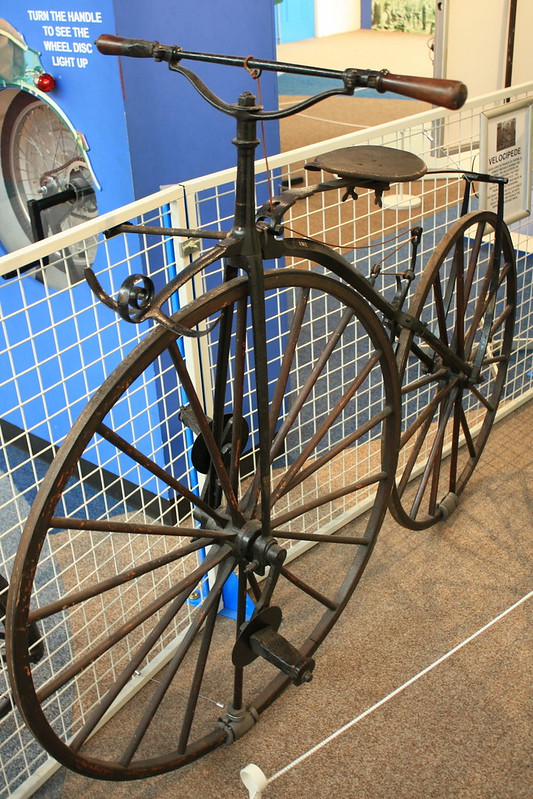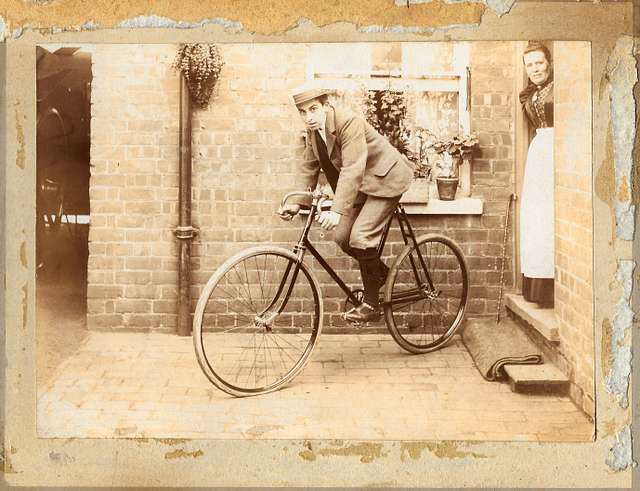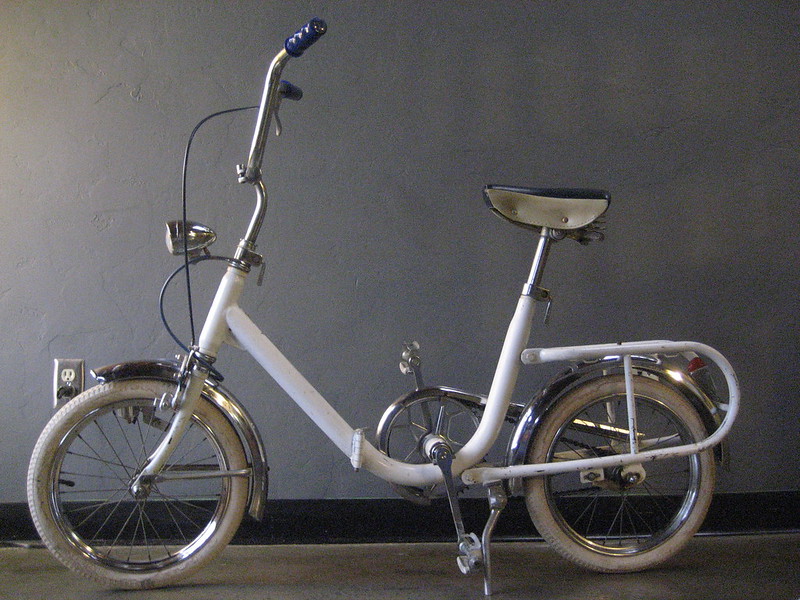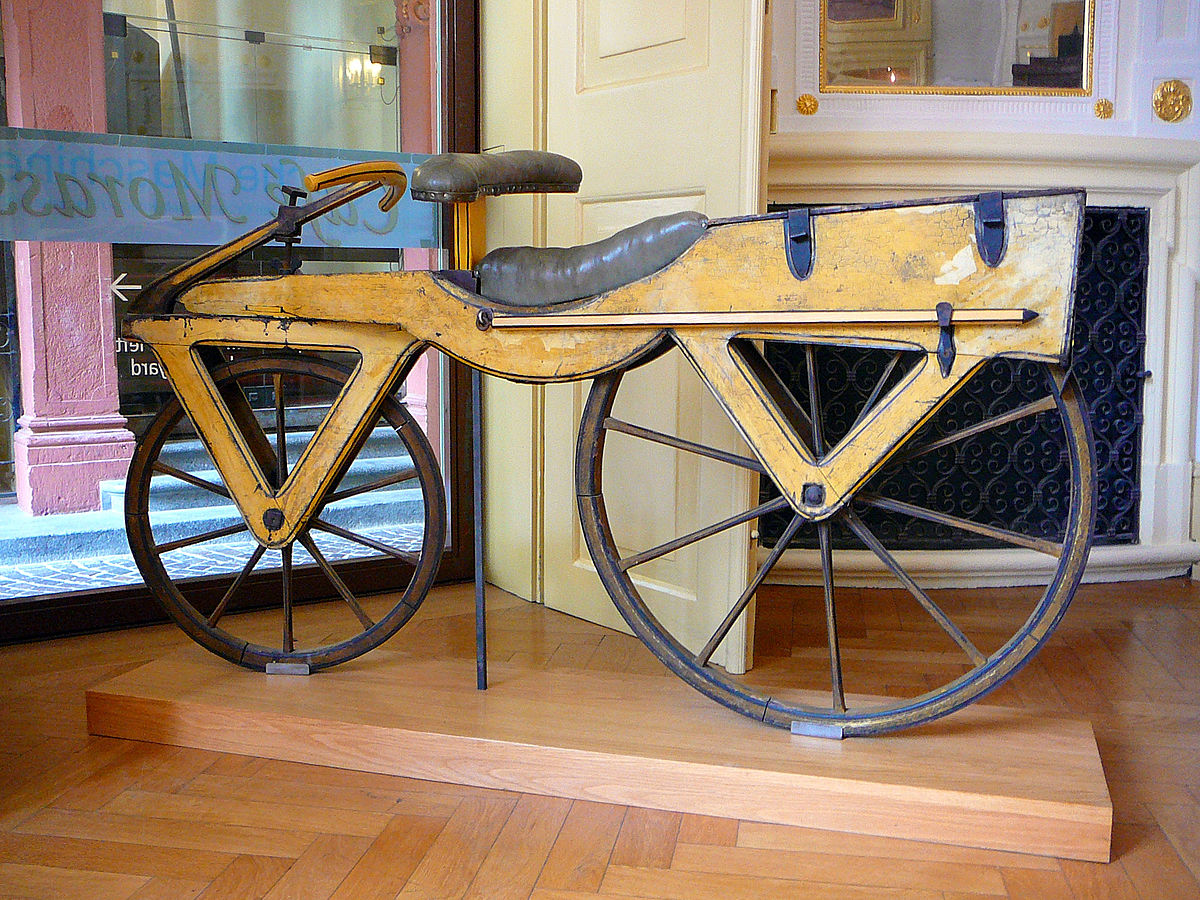Bicycles have played a crucial role in shaping transportation throughout history, offering a practical, affordable, and environmentally friendly way to get around. From early designs that barely resembled the bikes we know today, to the more sophisticated models that revolutionized travel, each advancement brought us closer to the bicycles we rely on now. This list highlights 13 historic bicycles that made transportation more accessible, showcasing how each design contributed to the evolution of cycling, whether for leisure, commuting, or even military use. Together, these bikes represent a timeline of innovation that has allowed people to travel faster, farther, and more efficiently.
The Penny-Farthing (1870s)

The Penny-Farthing, often referred to as the “ordinary” bicycle, became popular during the 1870s. Its distinct large front wheel and smaller rear wheel made it a symbol of Victorian innovation. The larger front wheel allowed for higher speeds, though balancing on it was a challenge, requiring great skill. Despite its impracticality for most people, the Penny-Farthing sparked a transformation in bicycle design. As it was widely used for sport and entertainment, it demonstrated the potential of bicycles for fast, efficient travel. Over time, the high wheel gave way to safer designs, but the Penny-Farthing remains an iconic step in the evolution of bicycles. This early model laid the groundwork for future advancements in transportation.
The Safety Bicycle (1885)

The Safety Bicycle, introduced by John Kemp Starley in 1885, is often hailed as the prototype for modern bicycles. Featuring equal-sized wheels and a chain-driven rear wheel, it made cycling safer and more stable than earlier models. The introduction of this design was revolutionary because it reduced the risks associated with the high wheel of the Penny-Farthing. With a lower center of gravity, the Safety Bicycle made cycling more accessible for the average person, including women. The model’s design also made it easier to manufacture, leading to wider adoption. The availability of the Safety Bicycle gave people a reliable, affordable mode of transportation. By solving the balance issues of previous designs, it made cycling a practical means of everyday travel.
The Rover (1885)

Developed by John Kemp Starley, the Rover Bicycle built upon the innovations of the Safety Bicycle. Its design introduced a chain-driven rear wheel and a diamond frame, which became the foundation for nearly every modern bicycle that followed. The Rover was among the first to use a rear-wheel drive mechanism that provided better pedaling efficiency. This model was pivotal in making bicycles safer and more comfortable to ride. With its robust design and stability, the Rover Bicycle allowed for longer journeys, opening up new possibilities for transportation. It became the benchmark for bicycles in the late 19th century. As mass production began, the Rover helped make bicycles more affordable for the average person.
The Ladies’ Bicycle (Late 1800s)

In the late 1800s, the design of bicycles began to cater to women, marking an important moment in transportation accessibility. Ladies’ bicycles featured a lowered top tube, which made it easier for women to mount and dismount. These bicycles helped to break societal barriers, as they allowed women greater mobility and independence. Unlike earlier bicycles, which were often difficult for women to ride due to their high frames, the Ladies’ Bicycle provided a more practical alternative. The design also offered comfort with softer seats and a more relaxed riding position. The growing availability of these bikes gave women a means of transportation that had previously been out of reach. They played a crucial role in promoting gender equality during a time when social roles were strictly defined.
The Velocipede (1860s)

The Velocipede, sometimes called the “bone shaker,” was one of the earliest forms of bicycle and one of the first to be mass-produced. Made primarily of wood with iron bands on the wheels, it had pedals attached directly to the front wheel. Its rough ride earned it the nickname “bone shaker,” but it was a significant step forward in personal transport. Although uncomfortable, the Velocipede was far faster than walking and gave people more freedom to travel. This model was the precursor to many innovations in cycling design, paving the way for future developments like the safety bicycle. It was also one of the first vehicles to be used for recreation, an early sign of the bicycle’s versatility. While not as smooth or efficient as later models, the Velocipede helped to popularize cycling.
The Courier Bicycle (1900s)

In the early 1900s, bicycles became an essential tool for couriers in urban environments. Designed for efficiency and durability, the Courier Bicycle featured a lightweight frame, thin tires, and a sturdy rear rack for carrying packages. Its speed and maneuverability made it ideal for navigating busy city streets, offering a reliable alternative to horses or early motorized vehicles. By the turn of the century, courier services were booming, and bicycles became synonymous with urban mobility. This model revolutionized delivery systems, making parcels and messages easier to transport. The Courier Bicycle’s accessibility and low cost compared to motorized alternatives made it an important transportation option in emerging cities. It also inspired the development of racing bicycles as urban cycling became more popular.
The Dutch Bicycle (1900s)

The Dutch Bicycle, developed in the early 20th century, is still an iconic model in modern cycling. With its comfortable, upright seating position and durable design, it became synonymous with everyday commuting. The bicycle’s robust frame, enclosed chain, and wide tires made it ideal for handling a variety of urban conditions. It also featured a step-through frame, which made it easier for both men and women to ride. Its popularity spread quickly throughout Europe, especially in cities with a focus on cycling infrastructure. The Dutch Bicycle emphasized practicality, durability, and comfort, which made it a popular choice for those looking for affordable and reliable transportation. Its design influenced the development of city bikes used around the world today.
The Folding Bicycle (1960s)

In the 1960s, the development of folding bicycles addressed the growing demand for portable, compact transportation solutions. With the ability to fold into a compact form, these bikes became incredibly popular among urban commuters and travelers. Folding bicycles allowed people to take their bikes on trains, buses, or store them easily at home, making them a practical option for city dwellers. The compact design also made them ideal for small apartments and tight storage spaces. They were especially useful in areas with limited cycling infrastructure, offering flexibility to riders. Over time, folding bicycles became more refined, with improvements in frame design and ease of folding. Today, they continue to offer an accessible solution for those seeking an efficient mode of transport in crowded urban areas.
The Schwinn Sting-Ray (1963)

The Schwinn Sting-Ray is one of the most iconic bicycles in American history, introduced in the early 1960s. With its low-rider frame, high handlebars, and banana seat, it captured the imagination of children and teenagers. This bicycle was not just a mode of transportation but a cultural symbol of youthful rebellion and freedom. Its design inspired the creation of the “chopper” bike style, which emphasized customization and personalization. The Sting-Ray’s popularity exploded across the United States, and soon other manufacturers began to adopt similar designs. This bike made cycling fun, and with its smaller wheels and bold aesthetic, it was particularly suited for short trips around neighborhoods. The Sting-Ray proved that bicycles could be both practical and fashionable, especially for the younger generation.
The Fat Bike (Late 2000s)

Fat bikes, introduced in the late 2000s, marked a significant innovation in off-road cycling. These bikes feature oversized tires, often 4 inches or wider, designed for riding on sand, snow, and other challenging terrain. Their wide tires allow cyclists to float over soft surfaces rather than sinking in, making them ideal for winter and beach riding. The Fat Bike’s design was influenced by the needs of adventurers and explorers, particularly in harsh conditions. As they grew in popularity, fat bikes made it possible to cycle in places where traditional bicycles could not go. Their rise has led to the development of new cycling events and competitions focused on extreme environments. Fat bikes represent a new chapter in accessibility, allowing riders to explore remote areas with ease.
The Dandy Horse (1817)

Considered one of the earliest precursors to the modern bicycle, the Dandy Horse was invented by Baron Karl von Drais in 1817. It was essentially a wooden frame with two wheels, with the rider pushing themselves along the ground with their feet. While it had no pedals, the Dandy Horse allowed for faster travel than walking, making it an appealing alternative. Though it was not widely adopted, it set the stage for future innovations in personal transportation. Its design demonstrated the potential for a human-powered vehicle that could travel greater distances more efficiently. The Dandy Horse influenced both early bicycle inventors and later designs, helping to shape the development of cycling. It also marked the beginning of the movement toward alternative modes of transportation in an age when walking was the dominant mode.
The Raleigh Tourist (1914)

The Raleigh Tourist, introduced by the famous Raleigh Bicycle Company, was designed for long-distance travel, particularly for people looking to use bicycles for commuting. Its robust construction and gear system made it a reliable option for both urban and rural use. It was one of the first bicycles to incorporate a weather-resistant frame and comfortable, wide tires, making it more suited for various terrains. The Raleigh Tourist’s design also focused on simplicity, with a straightforward gear mechanism that was easy to maintain. With its emphasis on practicality, it became one of the most popular bicycles for everyday transport during the early 20th century. The Raleigh Tourist was also a pioneer in creating bicycles specifically designed for women, contributing to greater gender inclusivity in cycling. By blending comfort and function, the Tourist made cycling more practical and accessible to a broader audience.
The Fixie (1970s)

The Fixie, or fixed-gear bicycle, emerged in the 1970s as a simple yet effective alternative to more complex geared bicycles. With no freewheel mechanism, the rear wheel of a Fixie is directly connected to the pedals, meaning the rider must continue pedaling to keep the bike moving. This simple design offered a more efficient use of energy, especially for urban cyclists. The Fixie gained a reputation for being low-maintenance and fast, making it a favorite among city commuters and bike messengers. While it was initially seen as a niche model, its ease of use and affordability helped make it an accessible option for a wide range of riders. The Fixie also became a symbol of the minimalist cycling culture that emerged in the 1980s and 1990s. It’s still a popular choice for urban cyclists today due to its simplicity and practicality.
This article originally appeared on Rarest.org.
More From Rarest.Org
The largest healthcare companies worldwide play an essential role in providing medical products, services, and insurance coverage to millions. These companies not only impact global healthcare accessibility but also represent some of the most financially powerful businesses. Read more.
Fossils are the preserved footprints of life from Earth’s earliest days, capturing moments from billions of years ago. Among the oldest are fossils like stromatolites, Grypania spiralis, and Dickinsonia, which hint at ancient worlds and primitive life. Read more.
The global economy is shaped by the powerhouse nations that dominate markets and drive international trade. Each country on this list holds a pivotal role, marked by their impressive GDP, large labor forces, and strategic partnerships. Read more.



